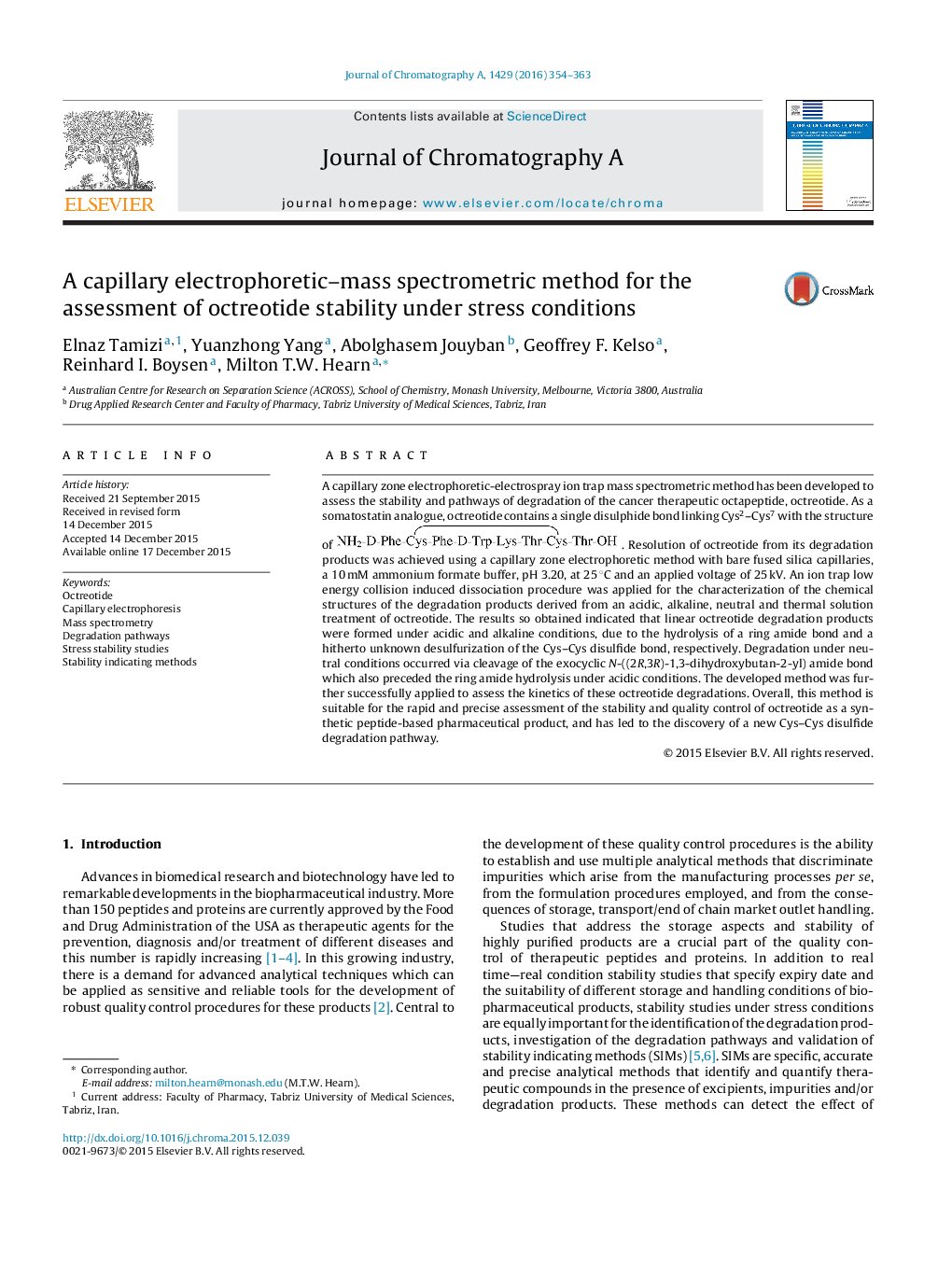| Article ID | Journal | Published Year | Pages | File Type |
|---|---|---|---|---|
| 7610588 | Journal of Chromatography A | 2016 | 10 Pages |
Abstract
A capillary zone electrophoretic-electrospray ion trap mass spectrometric method has been developed to assess the stability and pathways of degradation of the cancer therapeutic octapeptide, octreotide. As a somatostatin analogue, octreotide contains a single disulphide bond linking Cys2-Cys7 with the structure of . Resolution of octreotide from its degradation products was achieved using a capillary zone electrophoretic method with bare fused silica capillaries, a 10 mM ammonium formate buffer, pH 3.20, at 25 °C and an applied voltage of 25 kV. An ion trap low energy collision induced dissociation procedure was applied for the characterization of the chemical structures of the degradation products derived from an acidic, alkaline, neutral and thermal solution treatment of octreotide. The results so obtained indicated that linear octreotide degradation products were formed under acidic and alkaline conditions, due to the hydrolysis of a ring amide bond and a hitherto unknown desulfurization of the Cys-Cys disulfide bond, respectively. Degradation under neutral conditions occurred via cleavage of the exocyclic N-((2R,3R)-1,3-dihydroxybutan-2-yl) amide bond which also preceded the ring amide hydrolysis under acidic conditions. The developed method was further successfully applied to assess the kinetics of these octreotide degradations. Overall, this method is suitable for the rapid and precise assessment of the stability and quality control of octreotide as a synthetic peptide-based pharmaceutical product, and has led to the discovery of a new Cys-Cys disulfide degradation pathway.
Keywords
Related Topics
Physical Sciences and Engineering
Chemistry
Analytical Chemistry
Authors
Elnaz Tamizi, Yuanzhong Yang, Abolghasem Jouyban, Geoffrey F. Kelso, Reinhard I. Boysen, Milton T.W. Hearn,
